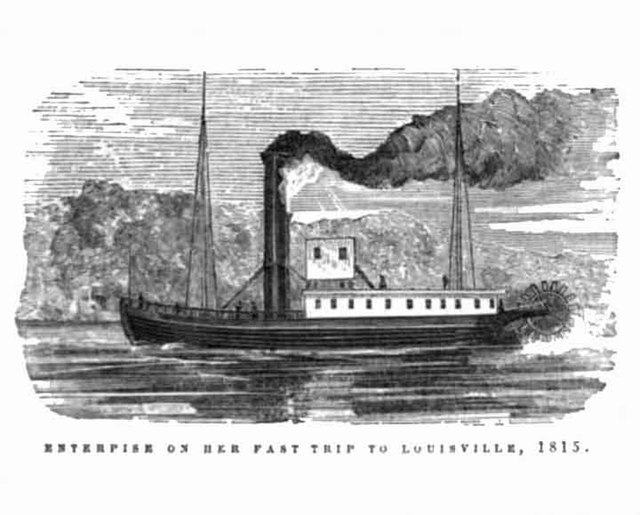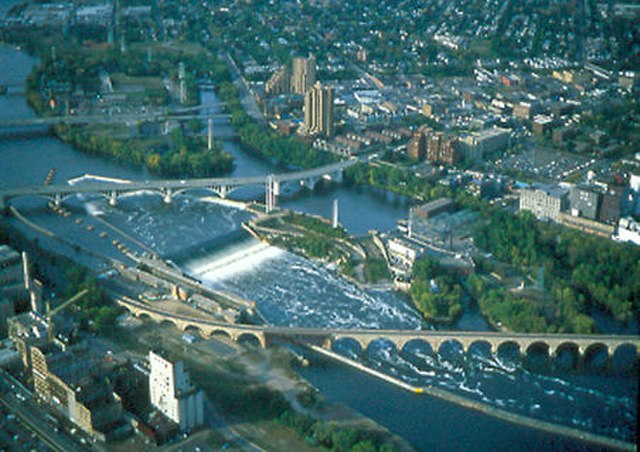Steamboats of the Mississippi
Steamboats played a major role in the 19th-century development of the Mississippi River and its tributaries, allowing practical large-scale transport of passengers and freight both up- and down-river. Using steam power, riverboats were developed during that time which could navigate in shallow waters as well as upriver against strong currents. After the development of railroads, passenger traffic gradually switched to this faster form of transportation, but steamboats continued to serve Mississippi River commerce into the early 20th century. A small number of steamboats are still used for tourist excursions in the 21st century.
Delta Queen at Paducah, Kentucky, 2007.
"Saloon of Mississippi River Steamboat Princess" (Marie Adrien Persac, 1861), showing elaborate interior of a prewar Mississippi steamboat
"Enterprise on her fast trip to Louisville, 1815"
The Kate Adams, built in 1898 (the third boat of that name), was the fastest and best equipped on the river, and one of the most successful - with her steel hull, she survived until 1927. At one time, she was under the command of famed Captain Grant Marsh.
The Mississippi River is the primary river, and second-longest river, of the largest drainage basin in the United States. From its traditional source of Lake Itasca in northern Minnesota, it flows generally south for 2,340 miles (3,766 km) to the Mississippi River Delta in the Gulf of Mexico. With its many tributaries, the Mississippi's watershed drains all or parts of 32 U.S. states and two Canadian provinces between the Rocky and Appalachian mountains. The main stem is entirely within the United States; the total drainage basin is 1,151,000 sq mi (2,980,000 km2), of which only about one percent is in Canada. The Mississippi ranks as the thirteenth-largest river by discharge in the world. The river either borders or passes through the states of Minnesota, Wisconsin, Iowa, Illinois, Missouri, Kentucky, Tennessee, Arkansas, Mississippi, and Louisiana.
The Mississippi River in Iowa
The source of the Mississippi River at Lake Itasca
The first bridge (and only log bridge) over the Mississippi, about 25 feet south of its source at Lake Itasca
Former head of navigation, St. Anthony Falls, Minneapolis, Minnesota








